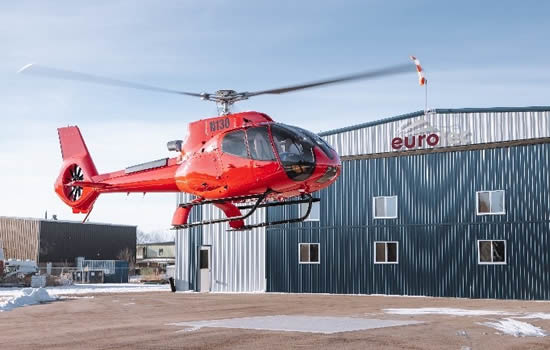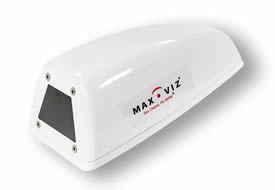East Aurora, New York Astronics EVS receives US, Canada and EASA approval for Airbus EC130 |
Astronics Corporation, a leading provider of advanced technologies for the global aerospace, defense and other mission critical industries, announced this week that the United States, Canada and EASA approved Astronics' Max-Viz 1200 and 1400 Enhanced Vision Systems (EVS) for Airbus Helicopter EC130 B4 and T2 models.
In cooperation with AVIO dg in Calgary, Canada, Astronics obtained the Supplemental Type Certificates (STC) for its Max-Viz 1200 and 1400 EVS from the US Federal Aviation Administration, Transport Canada Civil Aviation (TCCA), and the European Union Aviation Safety Agency (EASA).

The Astronics Max-Viz 1200 & 1400 Enhanced Vision System carries US, Canada, and EASA STCs for the Airbus EC130 B4 & T2 Helicopters.
The initial Maz-Viz 1400 installation using the newly approved STC was performed by Ontario-based EuroTec Canada Ltd., part of EuroTec Vertical Flight Solutions LLC, headquartered in Euroda, Kansas. The EVS will be displayed on the upgraded Garmin TXi avionics.
“The Astronics' Max-Viz technology provides pilots with an unprecedented level of situational awareness and safety," said Tom Geiger, Max-Viz Business Unit Director for Astronics. "Our EVS is perfectly suited for these single-engine light utility helicopters. To advance the application of our technology, we worked closely with STC holder AVIO dg to get this excellent technology approved for daily missions on the EC130.”
 Astronics’ Max-Viz 1200 and 1400 systems are lightweight, solid-state, low power, and feature an uncooled thermal camera. The sensor image displays on any cockpit equipment that accepts NTSC or PAL/Analog RS-170 video signals, including MFDs (Multi-Function Displays), PFDs (Primary Flight Displays). It also shows well on standalone displays, including iPads and other tablets, depending on aircraft configurations
Astronics’ Max-Viz 1200 and 1400 systems are lightweight, solid-state, low power, and feature an uncooled thermal camera. The sensor image displays on any cockpit equipment that accepts NTSC or PAL/Analog RS-170 video signals, including MFDs (Multi-Function Displays), PFDs (Primary Flight Displays). It also shows well on standalone displays, including iPads and other tablets, depending on aircraft configurations
“Using the Max-Viz EVS during our initial certification flights and having it integrated and displayed on the Garmin TXi truly exceeded my expectation on the clarity and detail that was provided by the system” said York Galland, current owner of the aircraft.
Astronics’ Max-Viz EVS provides improved safety through enhanced vision, enabling pilots to see more precisely in adverse weather conditions, such as haze, dust, smoke, smog, and light fog, even on the darkest night. In addition, pilots can detect and avoid clouds for a smoother ride. While landing, pilots using the Max-Viz EVS can identify the runway and view the terrain clearly to avoid wildlife and unlit obstructions.
The FAA permits properly equipped aircraft to fly certain Instrument Flight Rule (IFR) approaches to landing, in lieu of natural vision. Of the over 4,000 installed Astronics Max-Vis EVS systems, approximately 60 percent are on fixed-wing general aviation aircraft and 40 percent are operating on rotor wing aircraft.



